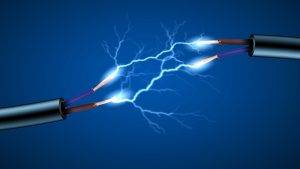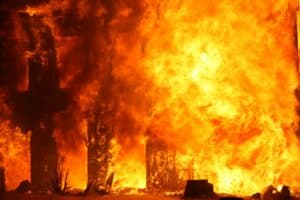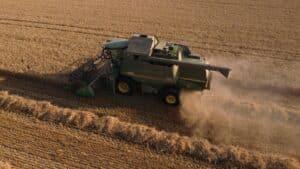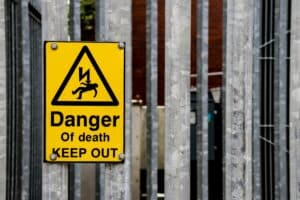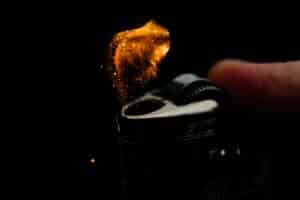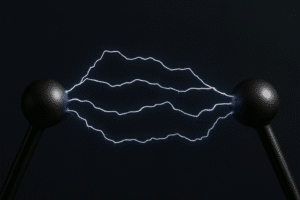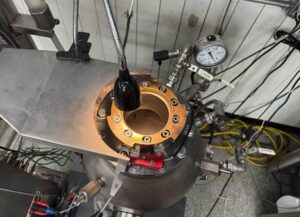Introduction
In combustible dust environments, ignition source management is a critical strategy to prevent fires and explosions. While controlling the formation of a flammable atmosphere should always be the first line of defense, managing ignition sources serves as a vital secondary Basis of Safety, especially when atmospheric control can’t be guaranteed.
Why Ignition Source Management Matters
Combustible dust hazards can lead to devastating industrial fires and explosions if not properly managed. When dust is dispersed in the air, even a small ignition source can trigger a catastrophic event. That’s why identifying and controlling potential ignition sources is essential to protect both people and property.
According to EN 1127-1:2007, thirteen types of ignition sources can lead to fires or explosions, including:
-
Hot surfaces
-
Open flames and hot gases
-
Mechanically generated sparks
-
Electrical equipment
-
Static electricity
-
Lightning
-
Electromagnetic waves
-
Ultrasonics
-
Chemical reactions
-
And more
Let’s dive into some of the most common and hazardous sources—and how to manage them effectively.
Electrostatic Discharges (ESDs)
Electrostatic discharges (ESDs) are one of the most common and potentially hazardous ignition sources in combustible dust environments. These discharges can occur during handling, transferring, or processing of powders and bulk solids, especially when proper grounding is not maintained.
There are four primary types of electrostatic discharges that can pose an ignition hazard:
-
Spark discharges
-
Brush discharges
-
Cone (or bulk) discharges
-
Propagating brush discharges (PBDs)
Each type has distinct characteristics, behaviors, and control methods.
Spark Discharges: The Most Potent Ignition Risk
What Are Spark Discharges?
Spark discharges occur between two conductors at different electrical potentials. This is a common risk when metal equipment or personnel become electrostatically charged while isolated from ground.
When such charged conductors contact a grounded surface, a spark can be released with energy levels exceeding 1 joule—more than enough to ignite flammable gases, vapors, and dust clouds.
Where Do They Happen?
Common areas where spark discharges can occur include:
-
Powder mills
-
Transfer lines
-
Charge ports
-
Hoppers
-
Mixers
-
Metal tools and containers
-
Ventilation ducts and hoses with spiral reinforcing wires
Key Prevention Measures:
-
Ground all conductive surfaces involved in powder transfer or handling.
-
Avoid creating isolated conductors in powder streams—these can become highly charged.
-
Include equipment grounding as part of your mechanical integrity program.
Grounding Requirements for Spark Discharge Control
Grounding of Conductive Materials
To prevent spark discharges, all fixed conductive equipment should be grounded to a resistance of less than 10 ohms (Ω). For moving parts (e.g., blender rotors, screw feeders), up to 1 megohm (1 x 10⁶ Ω) is acceptable.
Regular resistance testing ensures that grounding systems are intact and functioning properly.
Grounding of Personnel
Human bodies can store up to 30 millijoules (mJ) of static energy—enough to ignite low-MIE dusts. Personnel should be grounded when working in flammable atmospheres with a Minimum Ignition Energy (MIE) below 100 mJ.
Recommended resistance to ground:
-
Less than 100 megohms (1 x 10⁸ Ω) to prevent hazardous charge buildup
-
Greater than 50 kilohms (5 x 10⁴ Ω) to protect workers from electrocution risks
Brush Discharges: From Insulating Surfaces
Brush discharges arise from charged insulating materials (such as plastic liners or bags) to grounded conductors. They can be triggered by common activities like:
-
Emptying plastic drum liners
-
Opening plastic bags
-
Separating plastic sheeting
Although they typically exhibit energies up to 4 mJ, which can ignite vapors and gases, there is no documented case of a brush discharge igniting a dust cloud. Still, in mixed-atmosphere environments, this hazard should not be ignored.
Cone Discharges: During Powder Accumulation
Also known as bulk surface discharges, cone discharges occur when high-resistivity powders accumulate in a vessel and create strong surface electric fields. This field can ionize surrounding air and discharge toward the vessel wall.
Typical effective energy:
-
10–20 mJ, sufficient to ignite low-MIE dust clouds during filling operations
Cone discharges are influenced by:
-
Volume resistivity of the material
-
Particle size
-
Charge density
-
Vessel geometry
Managing these variables—along with grounding and dust handling procedures—can reduce the risk.
Propagating Brush Discharges (PBDs): Highly Energetic and Dangerous
PBDs are the most energetic form of electrostatic discharge after spark discharges. Capable of reaching several joules in energy, they can easily ignite combustible dust clouds, vapors, and gases.
How Do They Form?
PBDs originate from double-layer charge separation across an insulating material (e.g., films, linings, or coatings). This can occur when:
-
One side of an insulating surface becomes highly charged and induces opposite charge on the other side
-
A highly charged insulating surface is adjacent to a grounded conductor
Key Characteristics:
-
Require materials with breakdown voltage ≥ 4 kV
-
Typically occur in materials < 8 mm thick
-
Pose risks when using plastic-lined containers or hoses
Example Risk Scenarios:
-
Discharging powders from plastic-lined Gaylord boxes
-
Vacuuming combustible dusts using non-conductive plastic hoses with metal helixes
If conditions are right, these setups can result in a powerful PBD followed by a dust explosion.
Managing Electrostatic Discharge Hazards
To reduce the risk of ignition from electrostatic discharges:
-
Ground all metal equipment and personnel
-
Avoid use of insulating materials in powder streams
-
Replace plastic liners and hoses with conductive, grounded alternatives
-
Monitor grounding regularly
-
Understand the electrostatic behavior of your powders
Electrostatic discharge control should be an integral part of any combustible dust safety program. It not only reduces ignition risk but also forms a reliable part of your secondary Basis of Safety when controlling the flammable atmosphere isn’t enough.
Electrical Equipment in Hazardous Areas
Only use electrical equipment rated for combustible dust environments, as described in NFPA 499. Dust accumulation on non-rated equipment like motors, lighting, and switches can lead to ignition.
-
Regularly inspect and maintain dust control systems.
-
Classify areas where dust is handled or may accumulate.
-
Use local exhaust ventilation to reduce dust buildup and the extent of classified zones.
Ignition from Hot Surfaces
Both dust clouds and settled dust can ignite on contact with hot surfaces. These can come from:
-
Non-insulated steam pipes
-
Heaters and boilers
-
Overheated motors and dryers
To manage this risk, determine the Minimum Ignition Temperature (MIT) for your dust (both cloud and layer) and ensure that equipment surface temperatures stay below this threshold.
Friction and Mechanical Sparks
Misaligned moving parts, tramp metal in mills, or worn bearings can create friction and sparks. Prevent these by:
-
Maintaining alignment and lubrication of all moving equipment
-
Using ball or roller bearings
-
Installing metal detectors, screens, and traps to capture foreign objects before they reach critical equipment
Spontaneous Heating
Powders processed or stored at elevated temperatures can self-heat and ignite. This can result from:
-
Chemical decomposition – independent of the environment
-
Oxidation – dependent on oxygen availability and environmental conditions
To manage spontaneous heating:
-
Evaluate thermal stability of powders during drying and storage
-
Use data like onset temperature (Tonset) to determine safe operating conditions
Open Flames
Avoid open flames in any dust-handling area. Common sources of ignition include:
-
Non-approved space heaters
-
Cutting and welding activities
-
Smoking
To minimize risk, flame-producing activities should only occur in designated, controlled zones, with appropriate permits and supervision in place.
When Ignition Source Management Isn’t Enough
Some materials are so sensitive to ignition—due to low MIE or MIT values—that complete avoidance of ignition sources may not be feasible. In these cases, additional explosion prevention or protection measures, such as explosion venting or suppression, may be required as the primary Basis of Safety.
Final Thoughts
Effective ignition source management plays a crucial role in safeguarding facilities that handle combustible dusts. From grounding systems and rated equipment to friction control and thermal evaluations, each measure adds a layer of protection. But the strategy must be tailored to your specific processes, materials, and risks.
Need help developing a dust hazard safety plan?
At Prime Process Safety Center, we specialize in combustible dust hazard analysis and ignition source management. Our expert team offers testing, consulting, and training to keep your operations safe and compliant.








